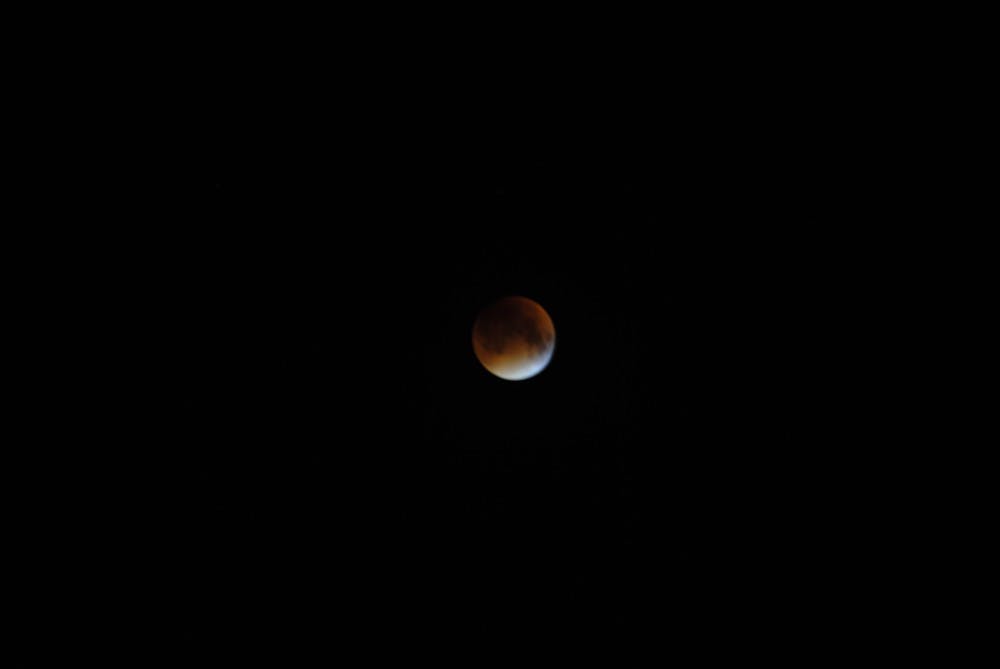Aside from catching up on homework and binge watching Netflix, Sunday night is giving students another reason to stay up late.
The only total lunar eclipse of 2019 – referred to as the Super Blood Wolf Moon – will illuminate red over Muncie during the rare lunar phenomenon.
Beginning 9:36 p.m. Sunday, the moon’s white surface will slowly turn red as it positions itself directly opposite the Earth from the sun, casting a maroon shadow on the moon, giving it its bloody nickname, according to the website of NASA’s Jet Propulsion Laboratory (JPL).
A wolf moon is the traditional Native American name for the first full moon in January, NASA’s Astronomy Picture of the Day website states.
“The red color comes from the fact that our atmosphere is better at blocking blue light than red light,” said Daniel Brossard, an astronomy graduate student, via email. “This effect can also be seen on Earth, it’s why the sky gets redder during sunrise and sunset, as the light is having to pass through more atmosphere to reach us.”
Eclipses typically occur when the Earth, sun and moon align. JPL’s website said a total lunar eclipse requires a full moon and for the sun and the moon to be on opposite sides of the Earth, directly across from one another.
“This is different than a new moon, which happens when the moon is between the Earth and the sun, so the bright part of the moon is actually facing away from us instead of the Earth blocking the light,” Brossard said. “Usually we only get one lunar eclipse per year, and sometimes not even that.”
JPL’s website also states the time periods in which eclipses can occur are referred to as eclipse seasons and last approximately 34 days. Occurring somewhere around every six months, the Earth, sun and moon line up on the same plane, allowing the Earth to dress the moon with its shadow.
The rare phenomenon – in which the moon appears greater in size – is expected to last 5 hours and 12 minutes, ending 2:48 a.m. Monday, the website states.
“It's a ‘super moon,’ because it occurs near the moon's closest point in its orbit to the Earth called perigee,” said Guillermo Gonzalez, assistant professor of astronomy, via email. “Perigee doesn't always occur during full Moon.”
Maximum visibility of 2019’s first full moon will occur 12:12 a.m. Monday, at which point the magnitude of the total lunar eclipse will be at 1.195, according to Time and Date AS’ website.
NASA states that magnitude in terms of lunar eclipses is the measurement of the event’s brightness to people on Earth. The magnitude of a lunar eclipse determines whether or not the eclipse is partial or total. A partial lunar eclipse has a magnitude below 1, while total lunar eclipses have magnitudes of 1 and above.
“The best views are obtained away from bright city lights,” Gonzalez said. “It would be best to drive a few miles outside of town. We can't predict precisely how dark the moon will look, because it depends on how much dust is in the atmosphere.”
According to the Indiana Department of Natural Resources’ website, the next total lunar eclipse will occur in May 2021.
Contact Taylor Smith with comments at tnsmith6@bsu.edu or on Twitter @taynsmithh.





